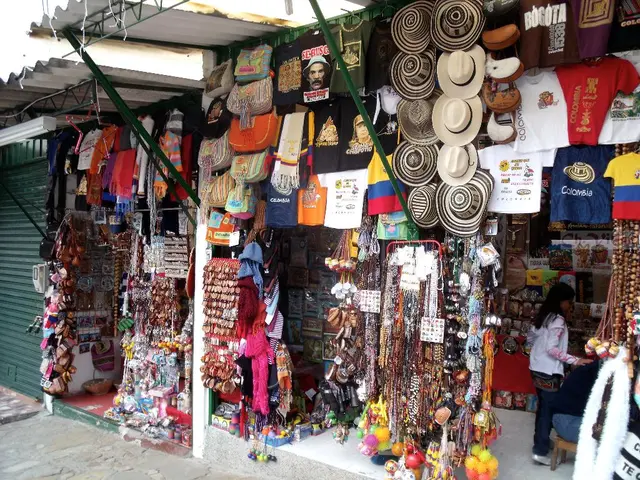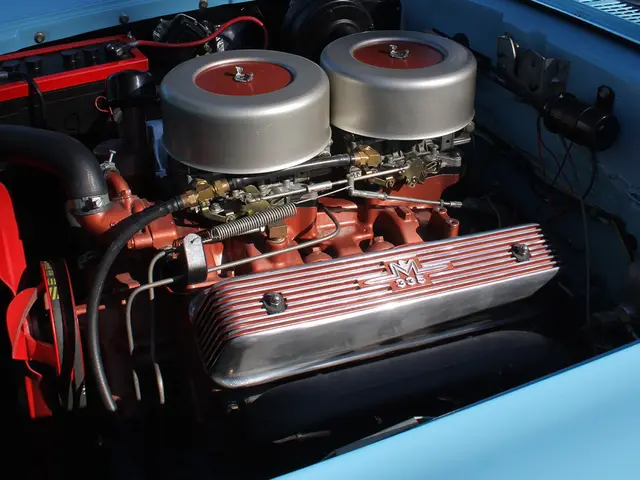Designing Harmonious Cityscapes of the Future: Insights from Architect and Innovator Carlo Ratti
Urban design in the future will seamlessly mesh technology and nature. Leading this movement to intertwine the organic and high-tech is Professor Carlo Ratti, who's making waves in urban design innovation at breakneck speed. In a chat with us, he highlights why data is the key to embracing nature-based design, why we need to be cautious about our smartphones, and how to make citizens the driving force behind innovation.
For Carlo Ratti, cities are special because they bring people together, allowing them to live, create, and connect as a community. And he's not one to boast about accolades – when asked about why renowned design and tech publications have named him in their 'most influential' lists, he brushes it off as fake news.
But Carlo is all about innovation. For him, it's all about doing things differently or creating new things. So what exactly does he mean by "the artificial"?
The Artificial Challenge
Referencing Herbert Simon's book 'The Sciences of the Artificial,' Carlo uses the term "artificial" to simplify everything humans have created. While it's a broad concept, architectural structures – when designed thoughtfully – can aid or hinder the growth of cities. For instance, Carlo points out how twentieth-century city designs often pitted the natural world against the built environment, creating sprawling cities and demolishing green spaces.
Today, the goal is reversed: how can we bring nature back into the city?
One way is by utilizing "support" plants and innovative hydroponics or aeroponics techniques as the foundation for infrastructure. Another avant-garde idea can be found in the project Carlo's design office, CRA-Carlo Ratti Associati, presented at Urban Future 2022.
Merging the Artificial and Natural
The collaborative effort, Hot Heart, was a winner in the Helsinki Energy Challenge. As a strategy to decarbonize the city's energy supply, it draws power from renewable sources when costs are low and converts it into heat. This energy is stored in water tanks resembling "floating islands" in the Baltic Sea close to Helsinki's coastline. During winter months when energy demands surge, the stored heat is released and injected into the district heating network, functioning like a giant battery and offering a more affordable, resilient energy source.
When it comes to optimizing such processes, Carlo emphasizes one crucial component: data. As an architect and engineer by training, it makes sense that he's so dependent on data in his discipline. Data offers a clearer understanding of demographics, resource management, urban needs, transportation patterns, and the impact of initiatives and innovations. These insights can lead to solutions that address urban problems by using sensors attached to taxis to assess air pollution levels and road conditions, for example.
In essence, data brings a deeper understanding of the city, allowing better decision-making and fostering open dialogue between policymakers and citizens.
While Carlo admits that the study of cities as a science, as proposed by Ildefons Cerdà in the 19th century, has become reality thanks to the internet, he's concerned about the endless streams of data smartphones collect about our movements and digital footprints. He's wary of the information asymmetry created by these devices, as we're aware of little about those monitoring us.
To tackle these issues, Carlo's team at the Massachusetts Institute of Technology (MIT) organizes a series of conferences known as Engaging Data. These events bring together privacy advocates, big tech companies, and academics to discuss information management. Carlo believes that better understanding and management of data will empower policymakers and citizens and make them an integral part of the urban feedback loop. By doing so, citizens will have a say in the transformation of their cities.
Ultimately, the decisions we make today will have a lasting impact on the world of tomorrow.
"Carlo Ratti and his projects are symbols of innovation and creativity in urban design. Using data, nature-based design, and cutting-edge technology, he's building a vision of cities for the future."
- Professor Carlo Ratti, in his work on urban design innovation, emphasizes that data is essential for embracing nature-based design, aiding in understanding demographics, resource management, urban needs, transportation patterns, and the impact of initiatives and innovations.
- In reference to Herbert Simon's book 'The Sciences of the Artificial', Carlo uses the term "artificial" to simplify everything humans have created, focusing on the impact of architectural structures on city growth and stressing the need to correct past mistakes where the natural world was pitted against the built environment.
- One solution to bring nature back into cities, as proposed by Carlo, is the utilization of support plants and innovative hydroponics or aeroponics techniques as the foundation for infrastructure.
- An avant-garde project demonstrating the merging of the artificial and natural is the Hot Heart, which was a winner in the Helsinki Energy Challenge. This strategy decarbonizes the city's energy supply by storing renewable energy in water tanks and releasing it during winter months for use in district heating networks.
- In the pursuit of better data management and privacy, Carlo's team at the Massachusetts Institute of Technology (MIT) organizes conferences called Engaging Data, bringing together privacy advocates, big tech companies, and academics to discuss information management.
- Carlo Ratti's work in urban design is considered symbols of innovation and creativity, combining data, nature-based design, and cutting-edge technology to build a vision of cities for the future, emphasizing the importance of empowering citizens in the transformation of their cities through better understanding and management of data.








